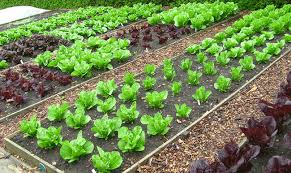Plums (Prunus domestica) are delicious and nutritious stone fruits that are relatively easy to grow in a home garden. With their sweet, juicy flesh and smooth skin, plums can be enjoyed fresh, dried as prunes, or used in various culinary dishes. This guide covers everything you need to know about growing plums, from selecting the right varieties to providing optimal care for healthy growth and abundant fruiting.
Introduction to Plums
Plums belong to the Rosaceae family and include several species and hybrids, with the European plum (Prunus domestica) and Japanese plum (Prunus salicina) being the most common. Native to Asia and Europe, plums have been cultivated for thousands of years and are prized for their sweet, tangy flavor and nutritional benefits, including vitamins A and C, fiber, and antioxidants.
Read also: Tips To Grow String of Pearls In Your Home Garden
Choosing Plum Varieties
Plums come in various types suited to different climates and uses:
European Plums: Generally hardier and better suited to cooler climates. They include varieties like ‘Stanley,’ ‘Green Gage,’ and ‘Italian Prune.’
Japanese Plums: Typically larger, juicier, and better adapted to warmer climates. Popular varieties include ‘Santa Rosa,’ ‘Satsuma,’ and ‘Shiro.’
Hybrid Plums: Crosses between European and Japanese plums, offering a range of flavors and growing requirements. Examples include ‘Pluot’ and ‘Plumcot.’
Select plum varieties based on your climate, soil type, and intended use (fresh eating, drying, or cooking) to ensure they are well-suited to your garden conditions.
Planning and Planting Your Plum Garden
Site Selection:
Choose a location with full sun (at least 6-8 hours of direct sunlight per day) and well-drained soil. Plums thrive in sandy loam or loamy soils with good air circulation to prevent disease.
Soil Preparation:
Prepare soil by incorporating organic matter like compost or well-rotted manure to improve fertility and texture. Plums prefer slightly acidic to neutral soil with a pH between 6.0 and 6.5.
Planting Plums:
Bare-Root Trees: Plant bare-root plum trees in early spring while they are still dormant. Dig a hole large enough to accommodate the roots without crowding, and plant the tree at the same depth as it was in the nursery.
Container-Grown Trees: Plant container-grown plum trees in spring or fall. Remove the tree from the container and gently loosen the root ball before planting.
Care and Maintenance of Plums
Watering:
Young Trees: Water newly planted plum trees deeply to establish roots. Keep the soil consistently moist but not waterlogged during the first growing season.
Established Trees: Water mature plum trees regularly during dry spells, especially during fruit development. Aim for deep, infrequent watering to encourage deep root growth.
Fertilizing:
Balanced Fertilizer: Apply a balanced fertilizer (10-10-10) in early spring before new growth begins. Follow the manufacturer’s instructions for application rates.
Organic Amendments: Consider adding compost or well-rotted manure around the base of the tree to provide a steady supply of nutrients.
Pruning:
Formative Pruning: Prune young plum trees to establish a strong scaffold structure. Remove any weak, crossing, or diseased branches.
Maintenance Pruning: Prune mature trees annually in late winter or early spring to remove deadwood, thin the canopy, and promote air circulation.
Managing Pests and Diseases
Common Pests:
Plum Curculio: Monitor for these beetles that lay eggs in the fruit. Use traps, apply insecticidal sprays, or practice good orchard sanitation to control infestations.
Aphids: Control aphids with insecticidal soap, neem oil, or by encouraging natural predators like ladybugs.
Common Diseases:
Brown Rot: A fungal disease that affects flowers and fruit. Prune affected parts, maintain good air circulation, and apply fungicides as needed.
Black Knot: A fungal disease that causes black, swollen galls on branches. Prune out infected wood and dispose of it properly.
Supporting Plums
Thinning:
Fruit Thinning: Thin the fruit when they are about the size of a marble to prevent overcrowding and ensure larger, healthier plums. Leave about 4-6 inches between each fruit.
Mulching:
Mulch: Apply a layer of organic mulch (such as straw, wood chips, or compost) around the base of the tree to retain soil moisture, suppress weeds, and regulate soil temperature.
Harvesting and Storing Plums
Timing:
Harvesting: Harvest plums when they are fully colored, slightly soft to the touch, and easily detach from the tree. The exact timing varies by variety and growing conditions.
Storage:
Storing: Store plums in the refrigerator to prolong freshness. They can also be dried, canned, or frozen for long-term storage.
Conclusion
Growing plums in your home garden offers a rewarding experience with delicious and nutritious fruit. By providing the right growing conditions, regular care routines, and addressing pest and disease challenges promptly, you can enjoy healthy plum trees that produce bountiful harvests year after year. Whether you prefer European plums for their hardy nature, Japanese plums for their juicy sweetness, or hybrid plums for their unique flavors, plums are sure to delight gardeners of all levels with their beauty and productivity.



